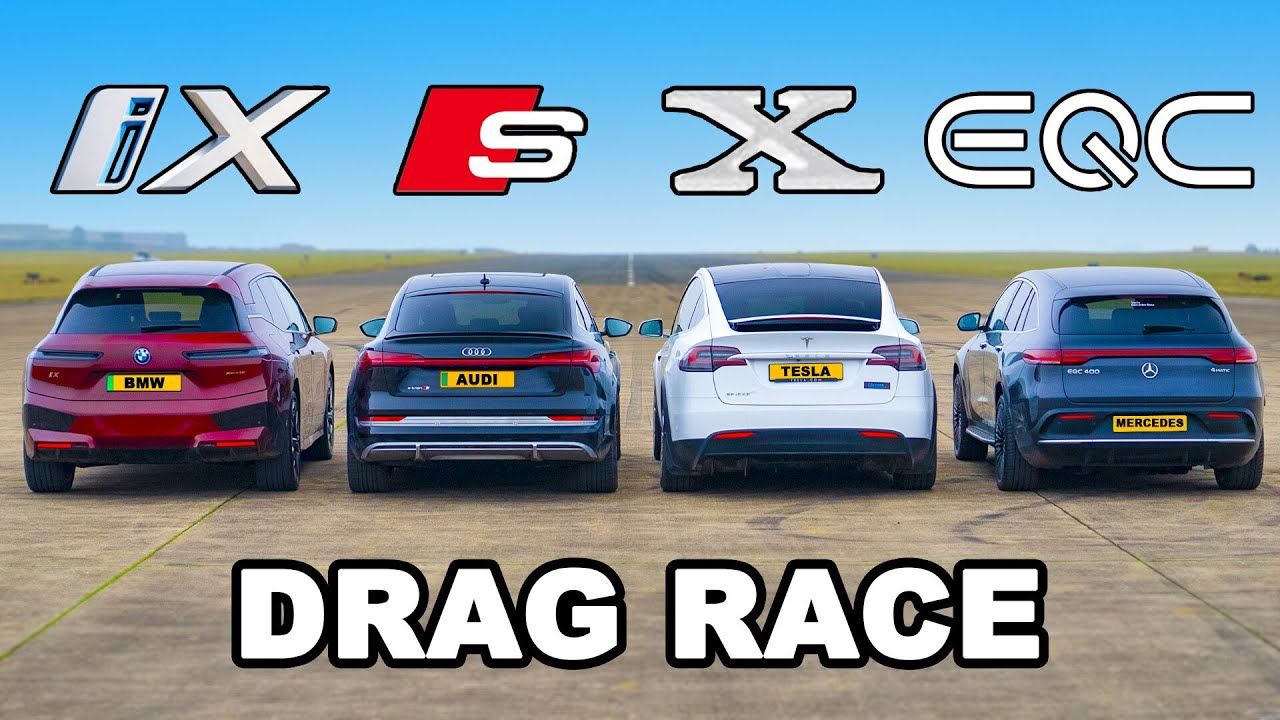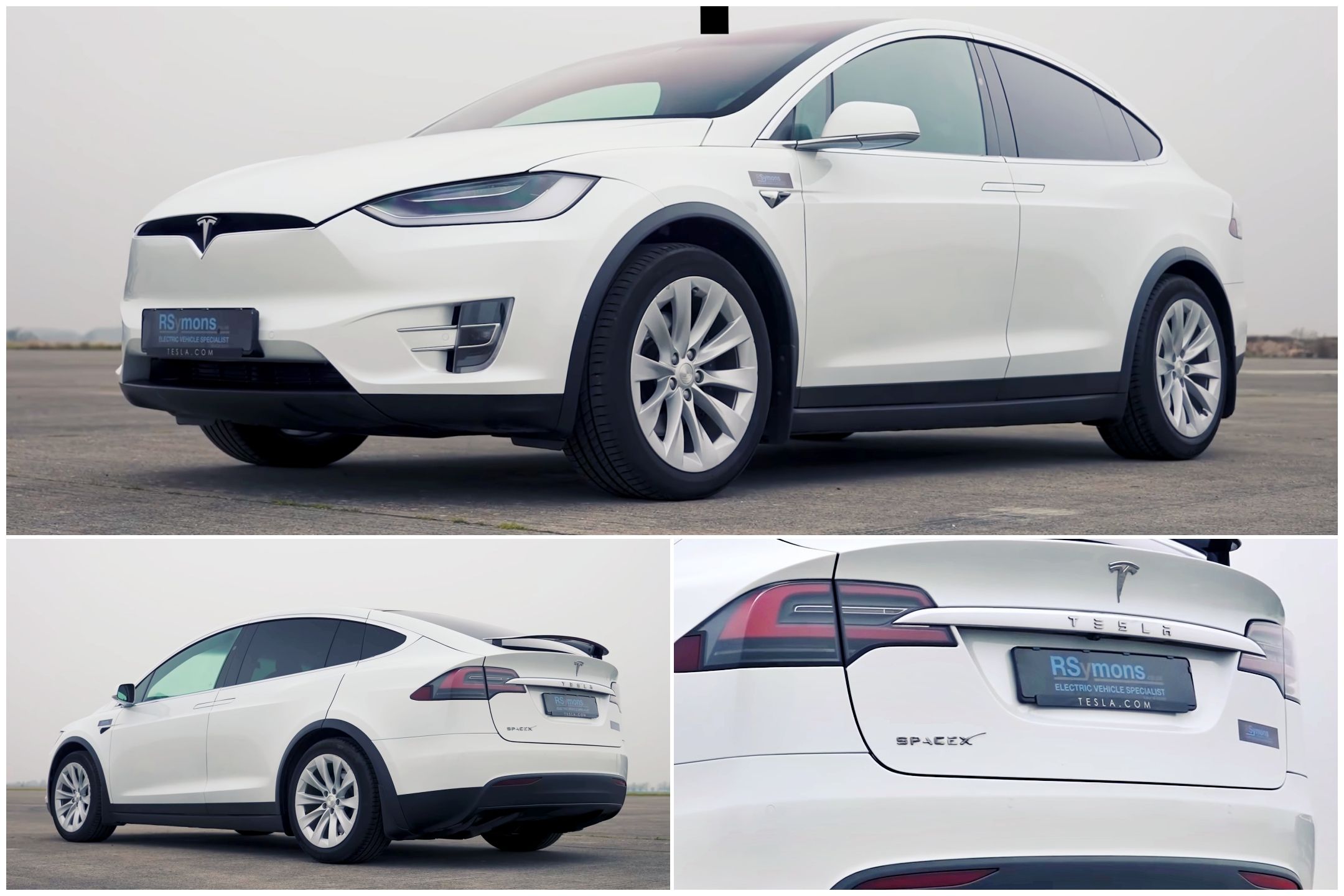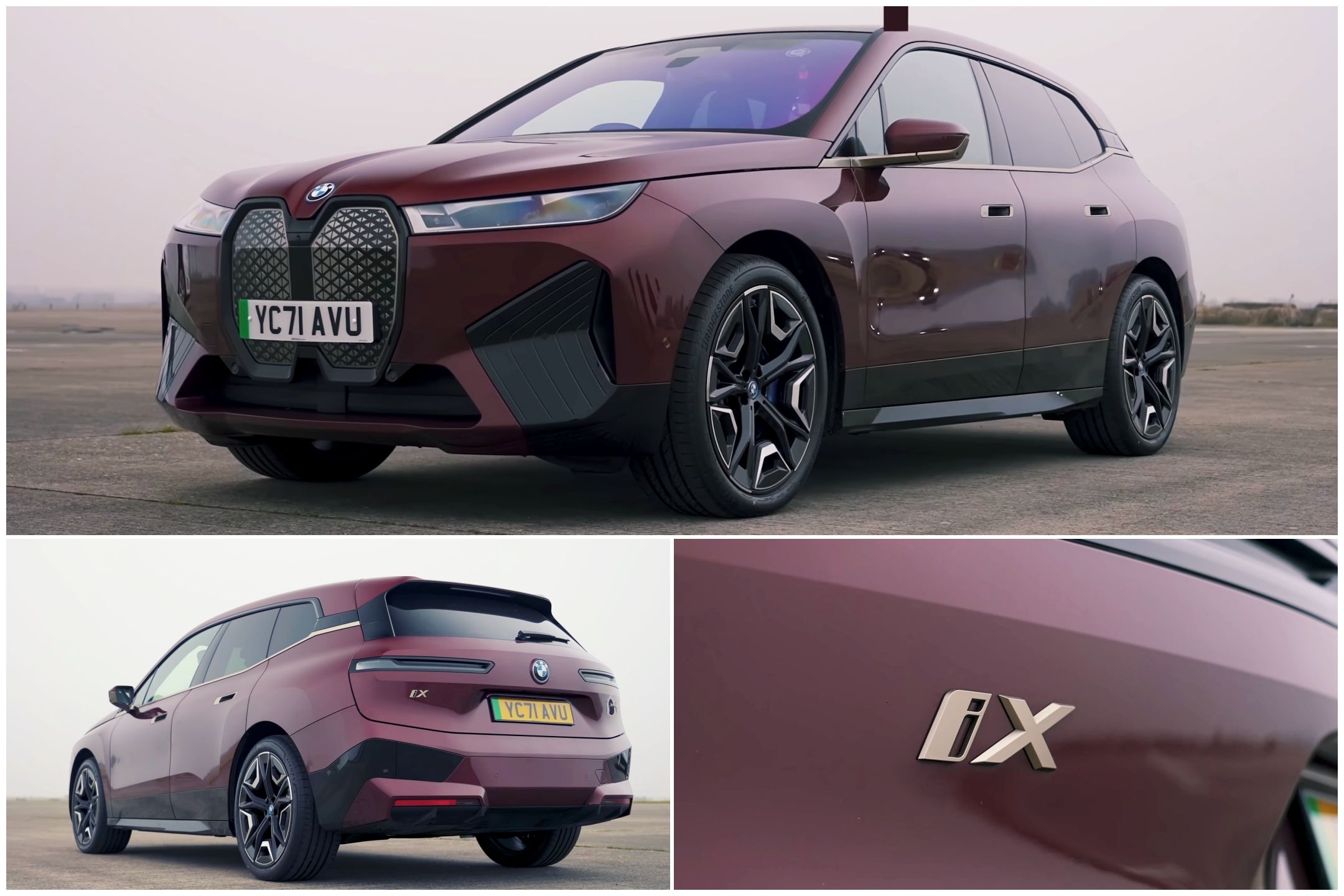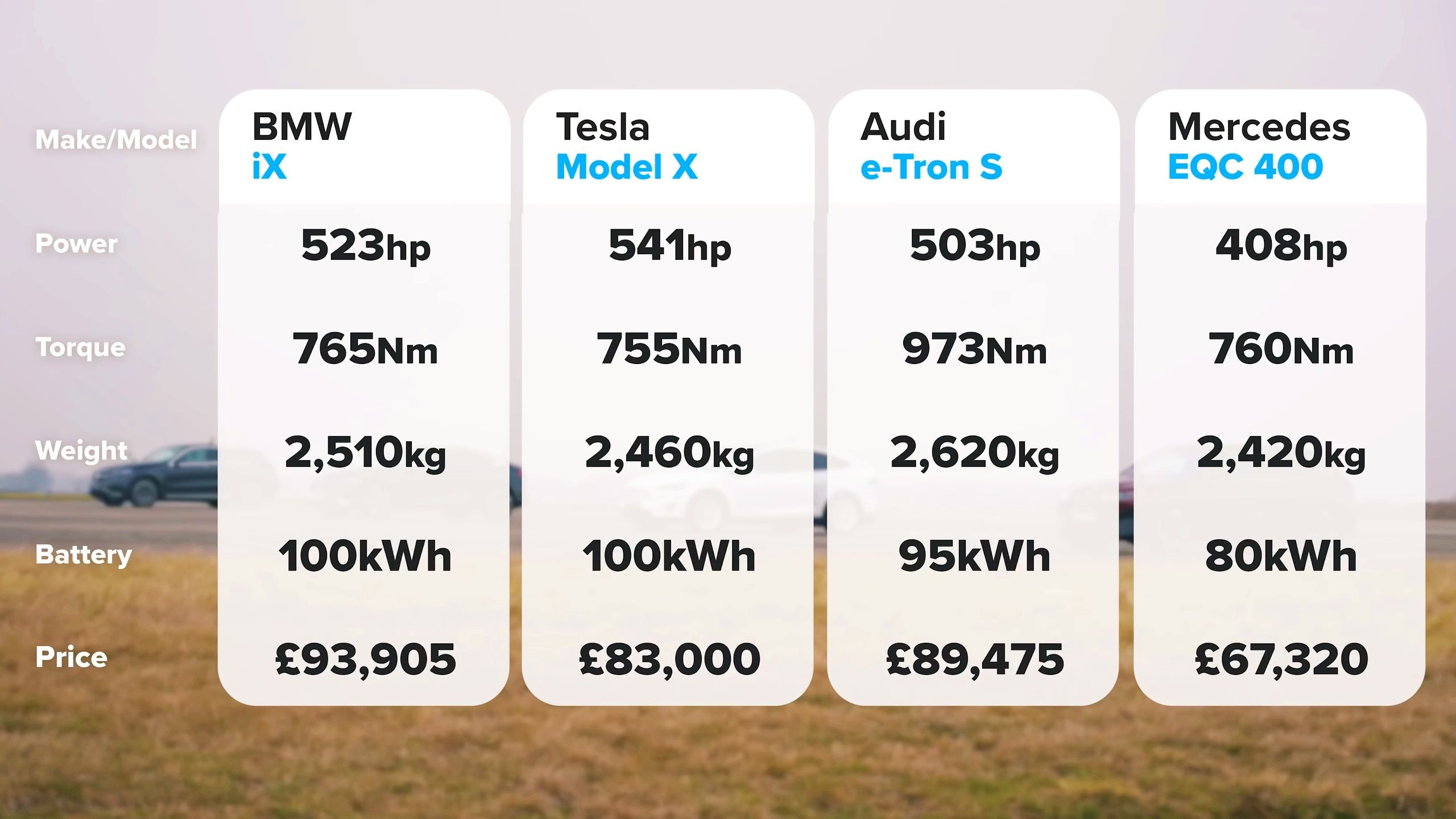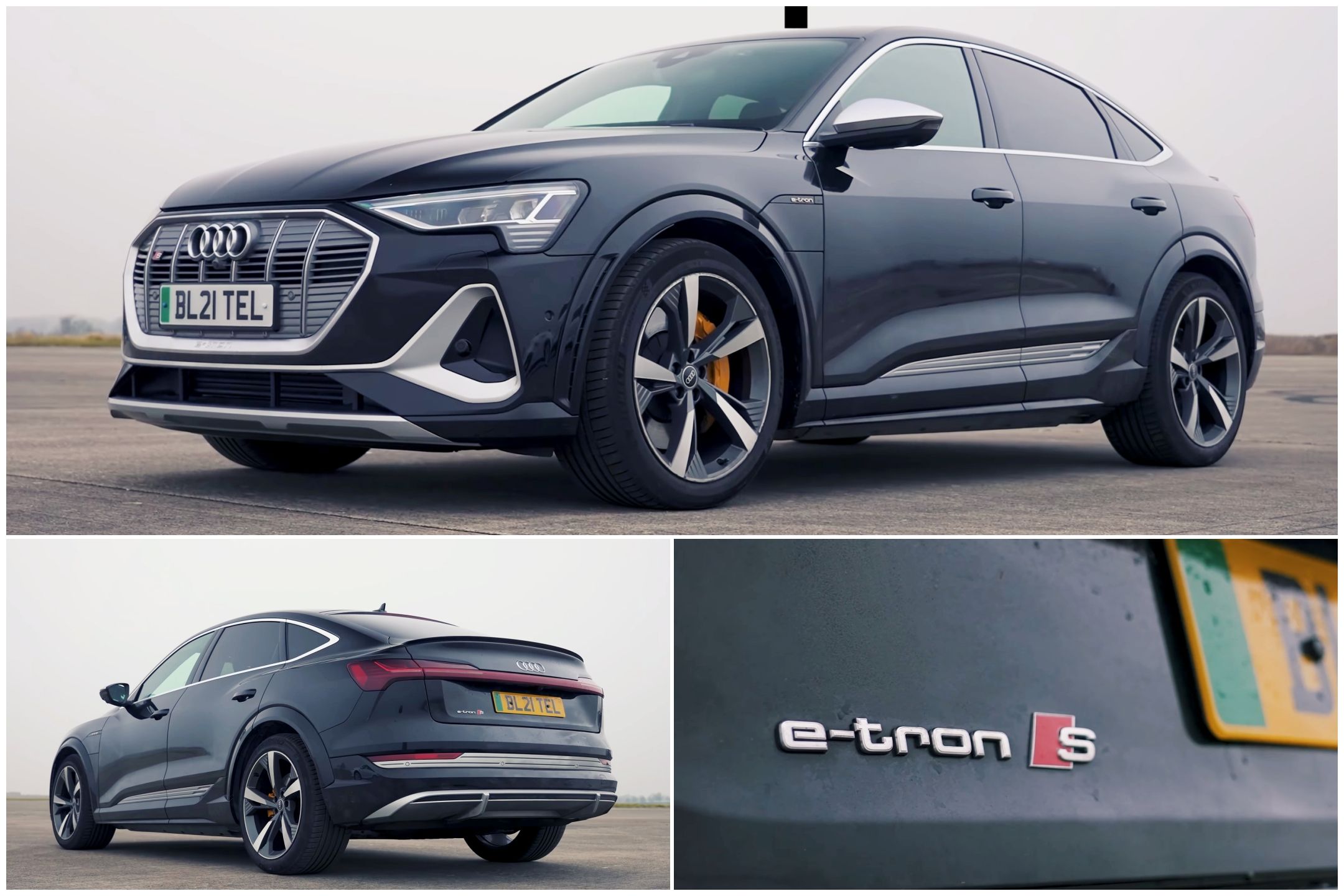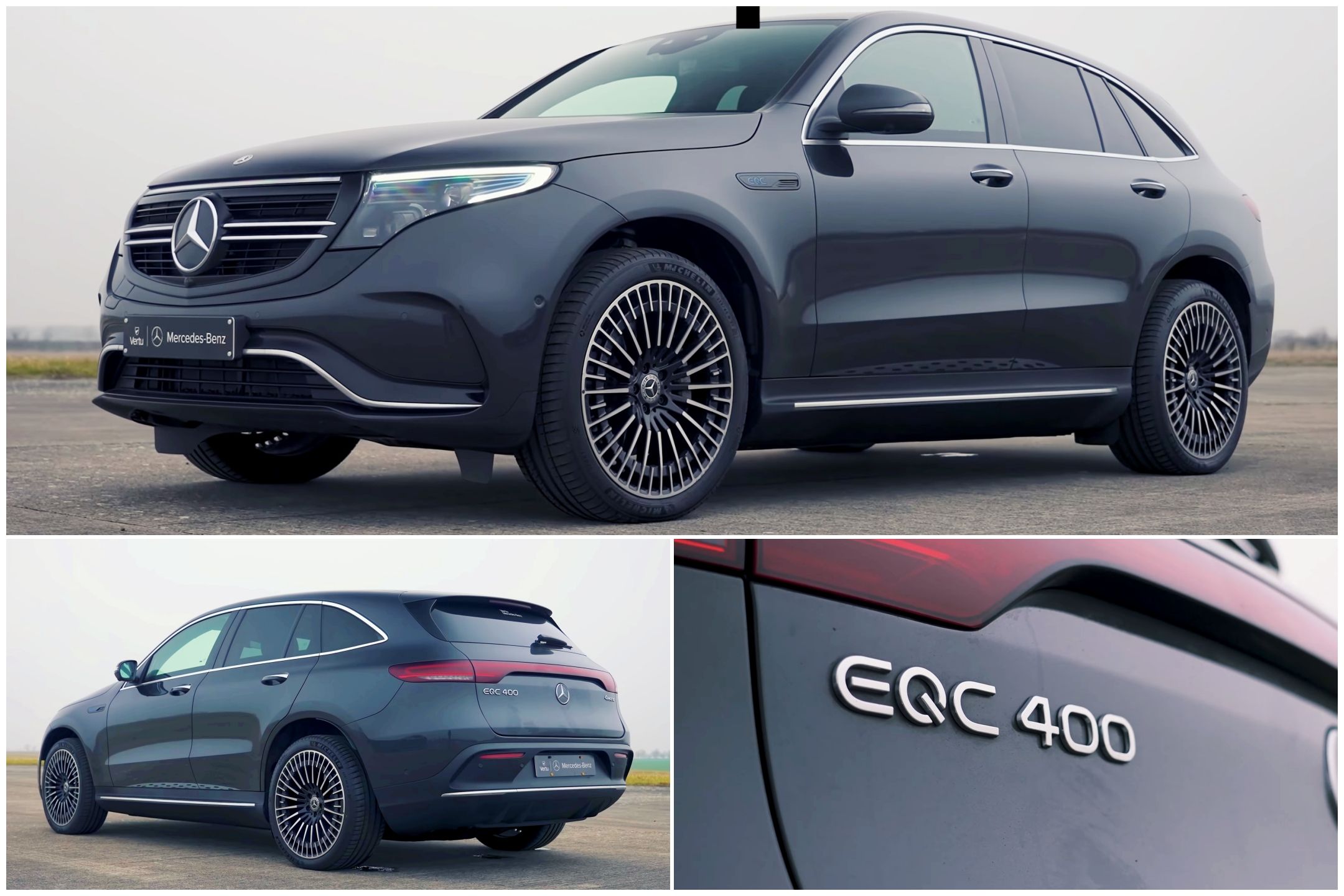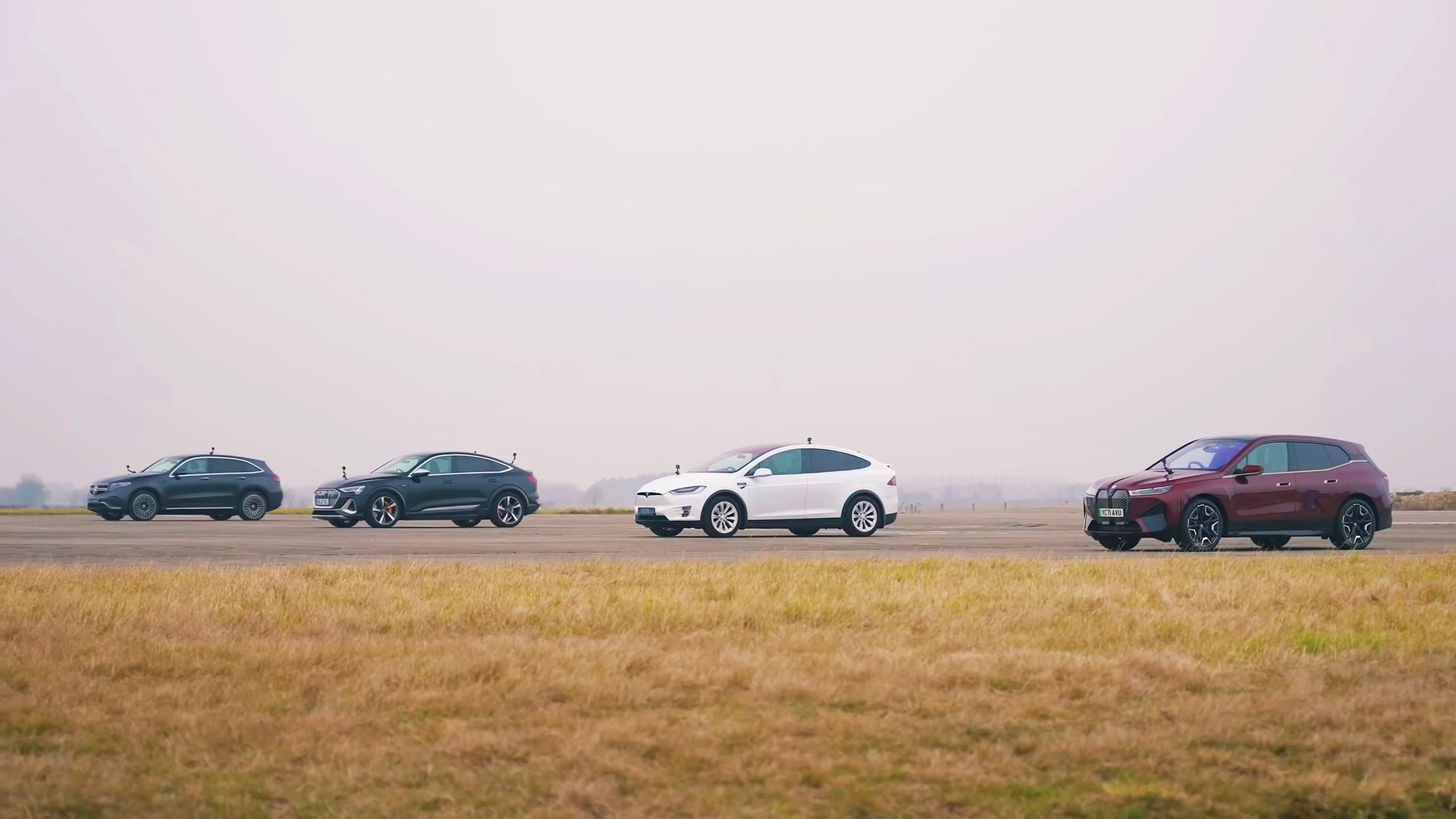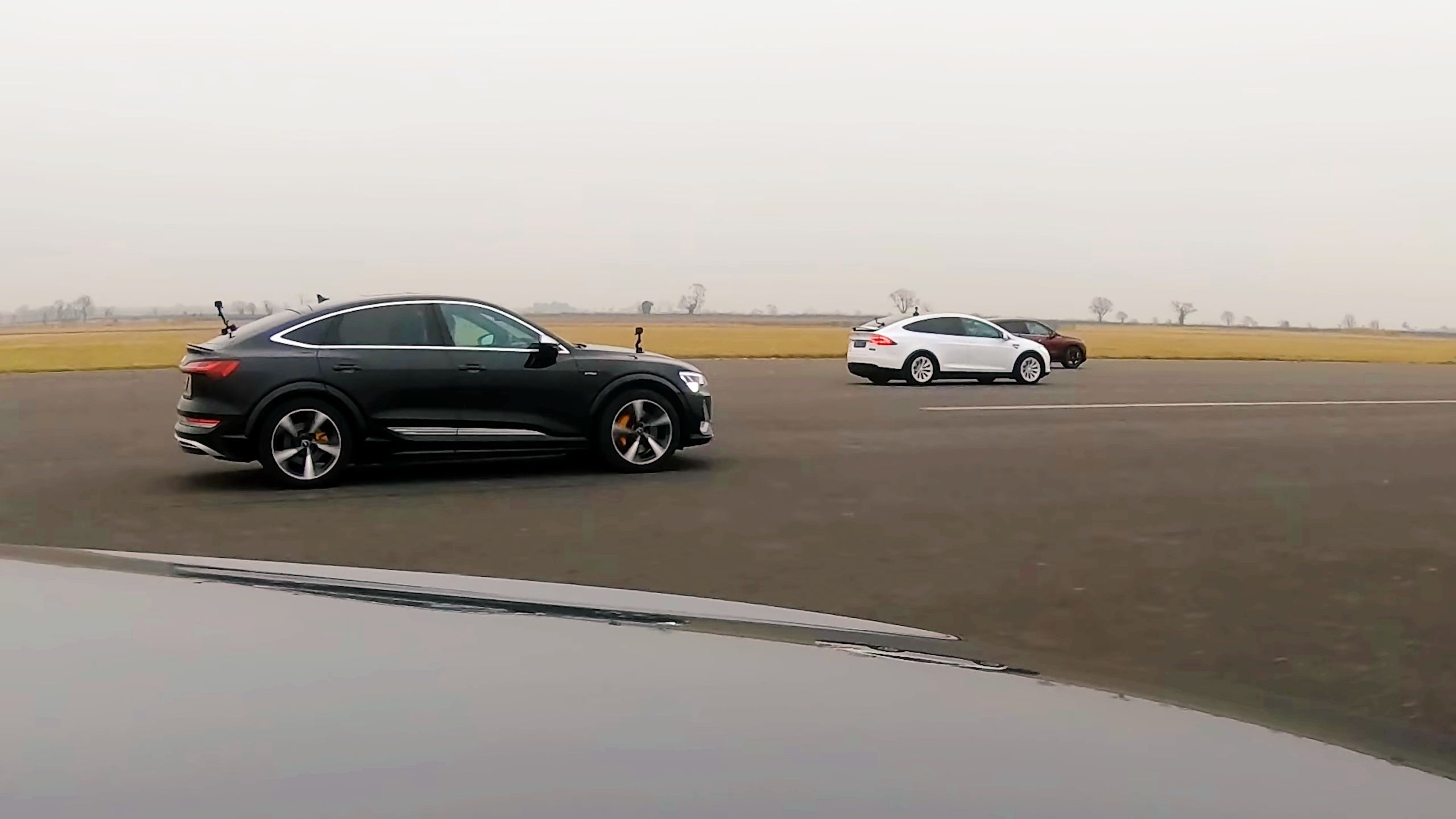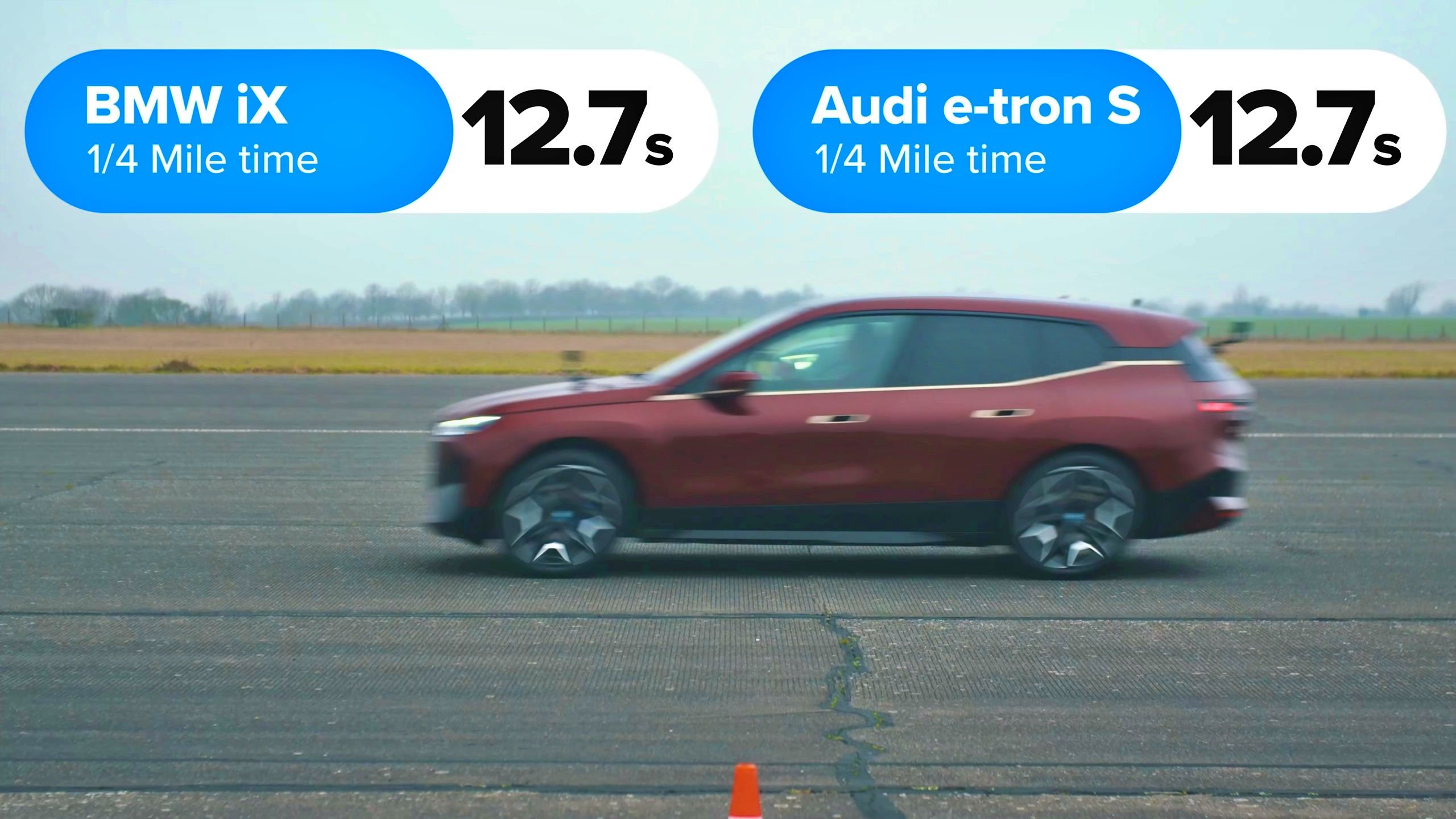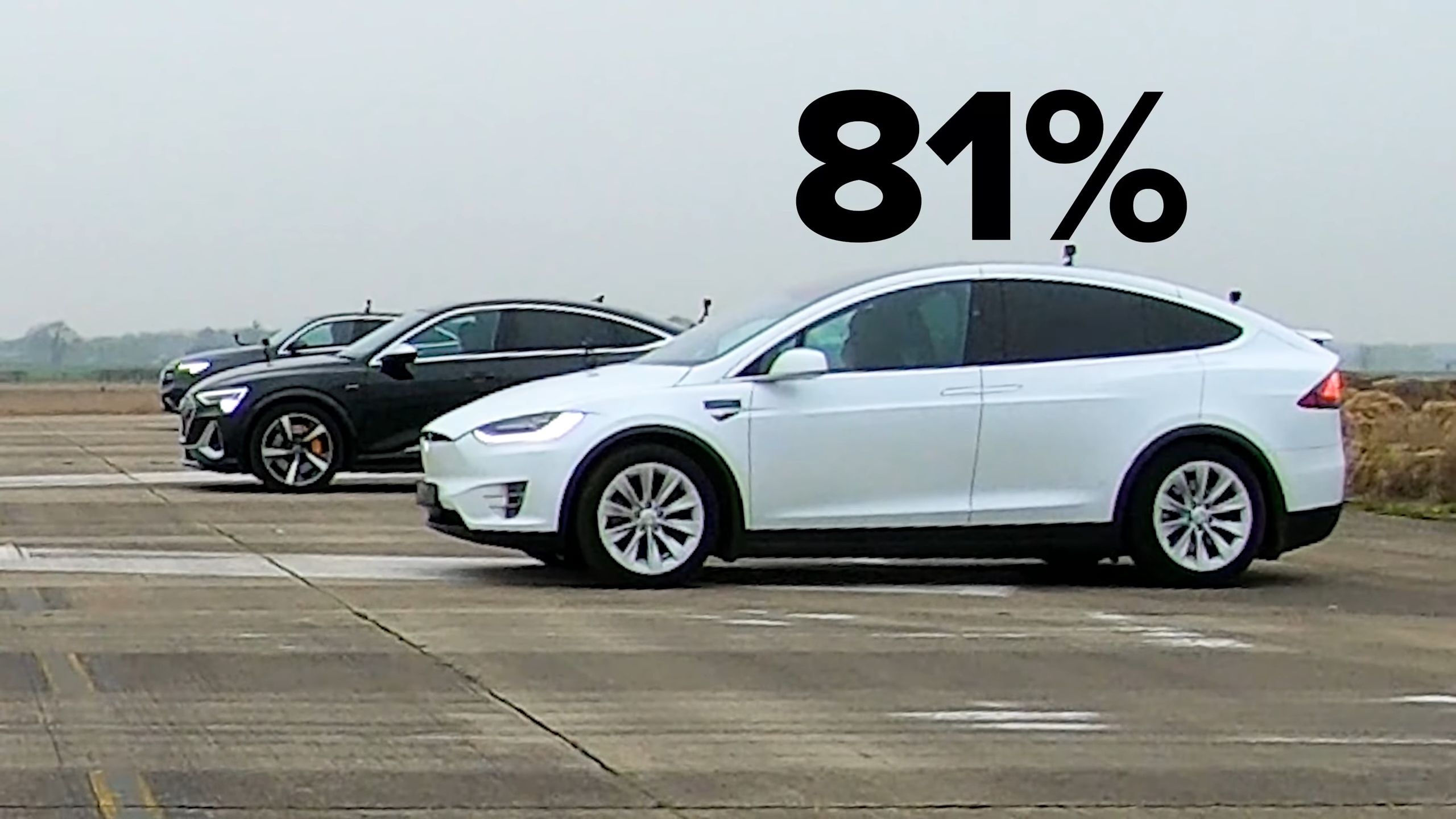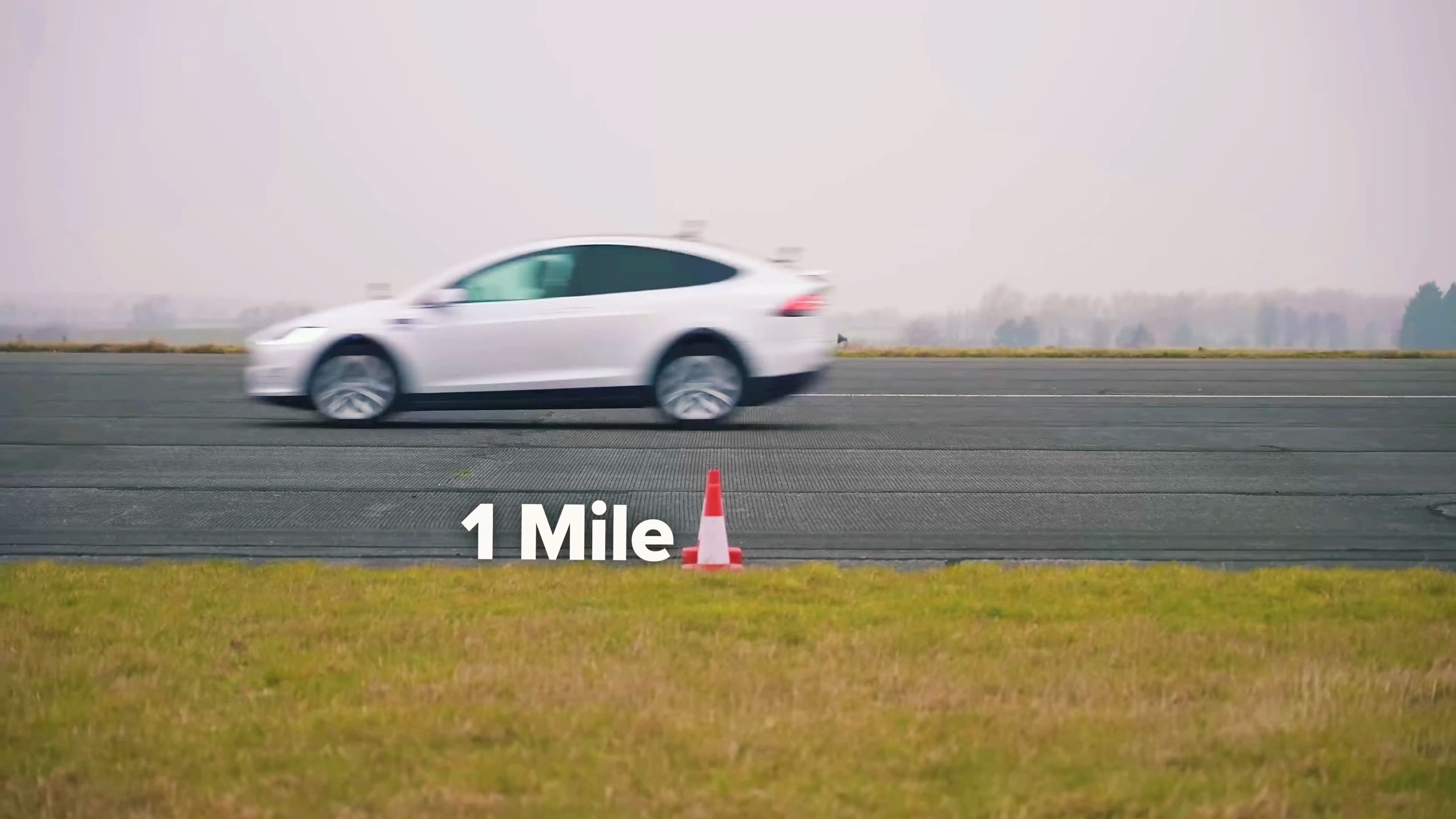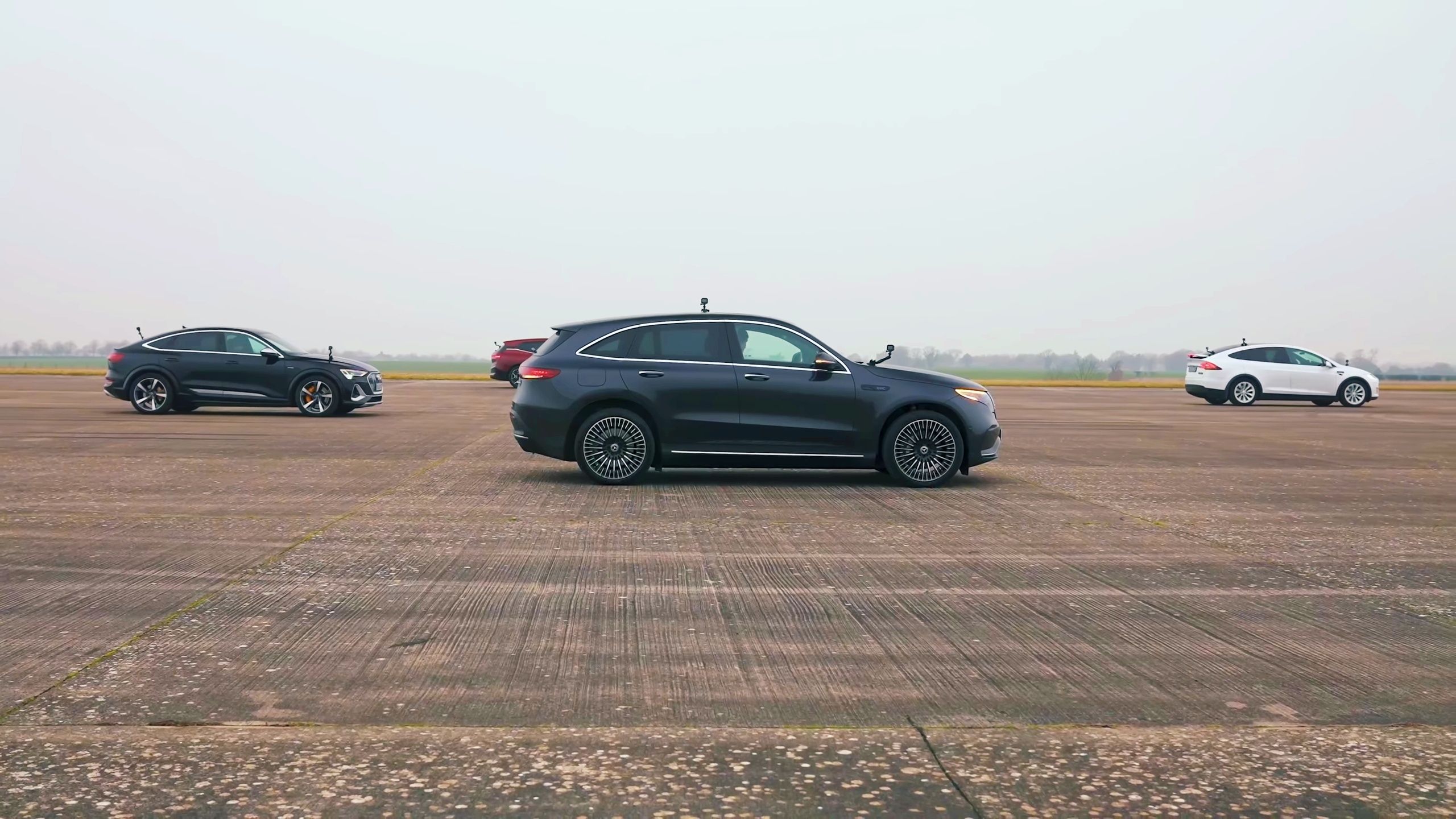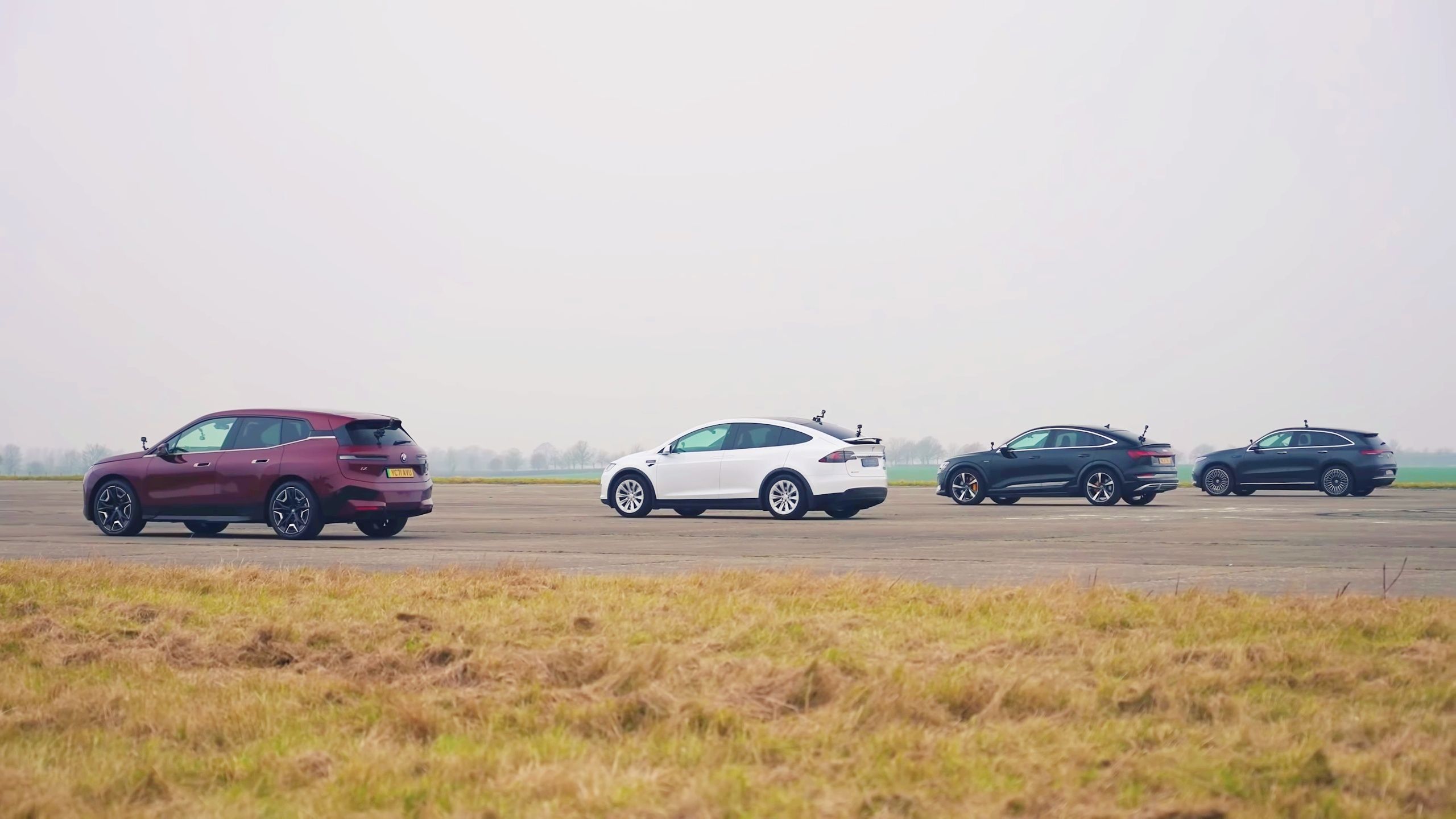Now, if you follow us regularly, you know that we love the drag races featured on CarWow. All-electric face-offs are now a thing apparently, and the last one had the best EV sedans go up against each other.
This time, Mat Watson and his team had a bunch of all-electric crossovers, that you’d see on a typical school run, max it out on a runway. Let's look at the contenders, shall we?
Tesla Model X Long Range
You’ve got a white Tesla Model X Long Range coming in from Stateside. The Model X they had, puts out 541 horsepower and 557 pound-feet of torque. It packs AWD and weighs 5,423 pounds.
Now some of you may have noticed that this is not the Performance version of the Model X, and you’re right. It isn’t and the guys at CarWow chose to leave it out because it's just too powerful. And one more thing, this is the last-generation Model X, because the latest 2022 Tesla Model X still isn’t out yet in the U.K. according to Matt Watson. chose to leave it out because it's just too powerful. And one more thing, this is the last-generation Model X, because the latest 2022 Tesla Model X still isn’t out yet in the U.K. according to Matt Watson.}}
BMW iX xDrive50
The red Beemer on-site they had at hand was a BMW iX xDrive50 that produces 523 horsepower and 564 pound-feet of torque at 5,533 pounds.} The iX packs all-wheel drive as well.
Audi e-Tron S Sportback 55 Quattro
The black Audi e-Tron S Sportback produces 503 horsepower and 715 pound-feet of torque.} It will definitely need all those torques to haul around the 5,776 pounds of weight, making it the heaviest EV in this company. You’ve got Audi’s legendary Quattro AWD, which obviously isn’t the same system used on its ICE vehicles.
Mercedes Benz EQC 400 4Matic
Finally, you’ve got the Mercedes Benz EQC 400, which produces 408 horsepower and 560 pound-feet of torque at 5,335 pounds,} making it the lightest EV out of these four. Power is sent to all four wheels via Mercedes’ 4Matic AWD system. Can you believe that the Merc is also the most affordable of the lot? However, it still looks like the business. Strange times we live in.
The Standing Quarter
Round 1
With the highest torque figures in this company at least, it comes as no surprise that, the Audi was the quickest off the line. It was followed up by the Mercedes. You then had the BMW and finally the Tesla. However, both the iX and the Model Y managed to breeze past the EQC by the mid-way point, and had there been more room, the BMW could have even taken down the Audi.
Round 2
Okay, so round one to the Audi? Not quite as the Ingostadter might have jumped the start. So the EVs once again line up for yet another round. The hammer drops and the e-Tron S was nowhere this time around. The iX and the Model X got a fantastic launch, as did the Mercedes. The BMW went on to take the win with the Tesla breathing down its neck. The Audi managed to redeem itself in third. The Mercedes came in stone dead last. Apparently, the driver in the Audi couldn’t get the car to launch as there was a delay. With that, they turn around and decode to stage one last standing start.
Round 3
The driver in the Audi decides to use the hold function which would ensure that there’s no lag or delay from the motors. With that, all four EVs are ready for round three. The EVs get the perfect launch off the line. It really was a three-horse race between the Audi, Tesla, and the BMW. While the e-Tron S was in the lead, the BMW caught it at the finish line, taking the win for Munich. The Tesla came in third and the Mercedes was last once again. The Audi and the BMW had identical 1/4 mile times of 12.7 seconds, followed by the Tesla at 13 seconds flat and the Mercedes at 13.7 seconds.
Rolling Races
This test was going to be a bit different. It wasn’t just about how far the cars were from 30 mph, but also, which one consumed the most juice. Before they set off on the first out of two roll races, the BMW iX had 87% charge left in its batteries, the Tesla Model X had 81%, the Audi e-Tron had 70% and the Mercedes had 87%.
Roll Race From 30 mph
All four EVs are level up to 30 mph before giving it the beans. They floor it and once again. The e-Tron takes the lead, but not for long because as before the iX manages to get past, only to hit the speed limiter at 125 mph. Both the Audi and the Tesla begin to reel in the BMW as they can go faster than 125, with all three finishing within a second of each other. The Mercedes, meanwhile, also hit its limiter at 125 mph.
Round two saw a similar outcome from the get-go. However, with the iX hitting its limiter once again, it was the Tesla this time that took the lead and ended up winning. The BMW came in second, followed by the Audi, and the Mercedes I guess, was not even part of this race. Matt also pointed out that while three out of the four cars they had were German, it was the American EV that could really go flat out on a de-restricted Autobahn. At the end of two flat-out passes from 30 mph, here’s how much juice each of these EV crossovers used.
Battery Consumption In Rolling Races
|
BMW iX |
5 % |
|
Tesla Model X |
7 % |
|
Audi e-Tron S |
8 % |
|
Mercedes EQC |
7 % |
Brake Test
So, the final test and it’s an important one. An emergency brake test. These crossovers are, after all, family cars first more than anything else. Which one of these hulking EVs can stop in the shortest distance from 100 mph. Well, it turns out that the Audi e-Tron S seems to have the best brakes, followed by the BMW iX, the Mercedes EQC is next and the Tesla comes in last.
To Sum It Up
So, what did we learn today? Clearly, the BMW seems to have the edge, taking two out of three races in the standing quarters. The Audi had the strongest launches of the bunch, and the Mercedes really is all about luxury and not about outright performance.
The Tesla, meanwhile, well, if the last gen-Model X could be so lethal, I wonder what a model X performance or even the 2022 facelift model could do. Can’t wait for that one.
You can watch the entire race in the video below

